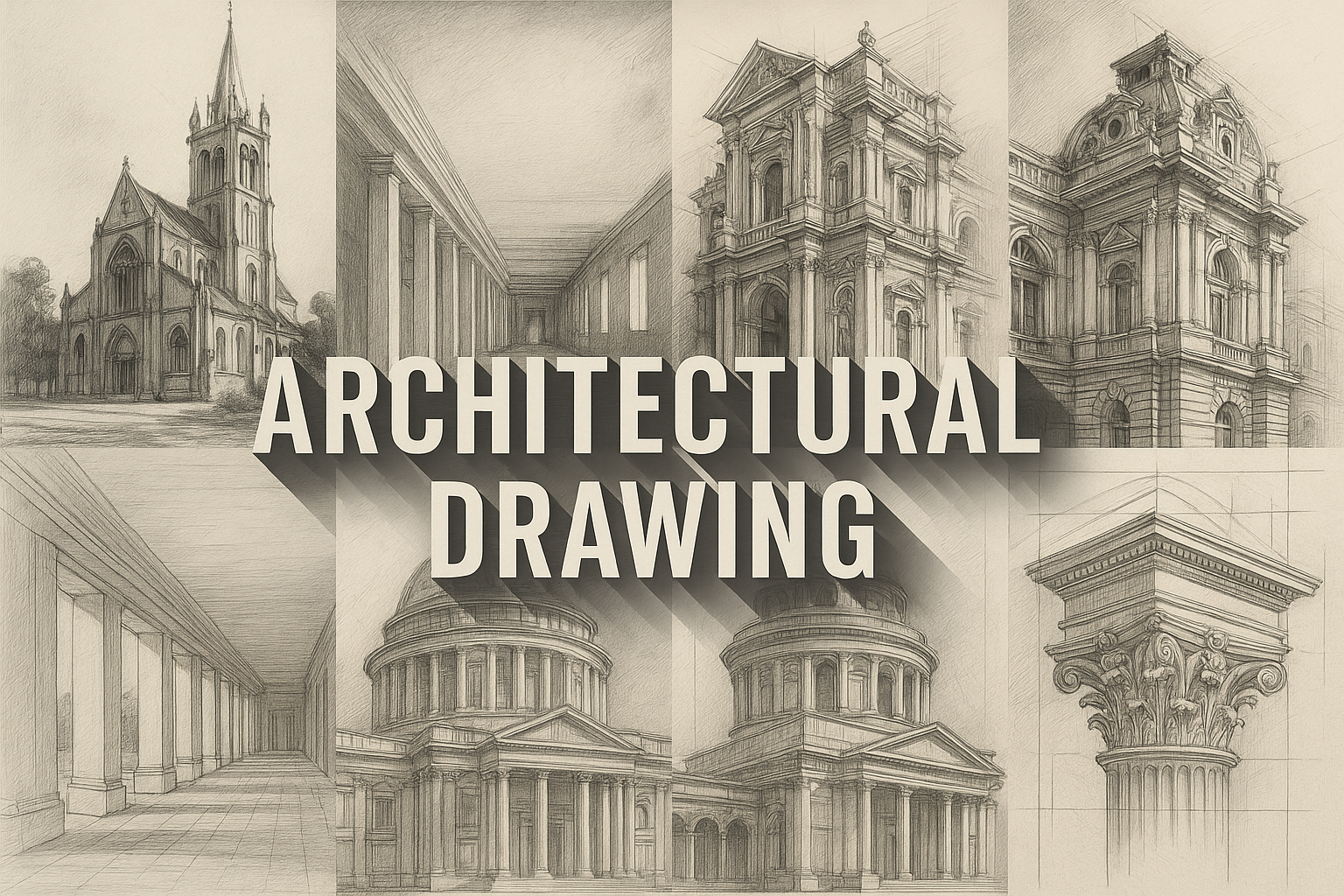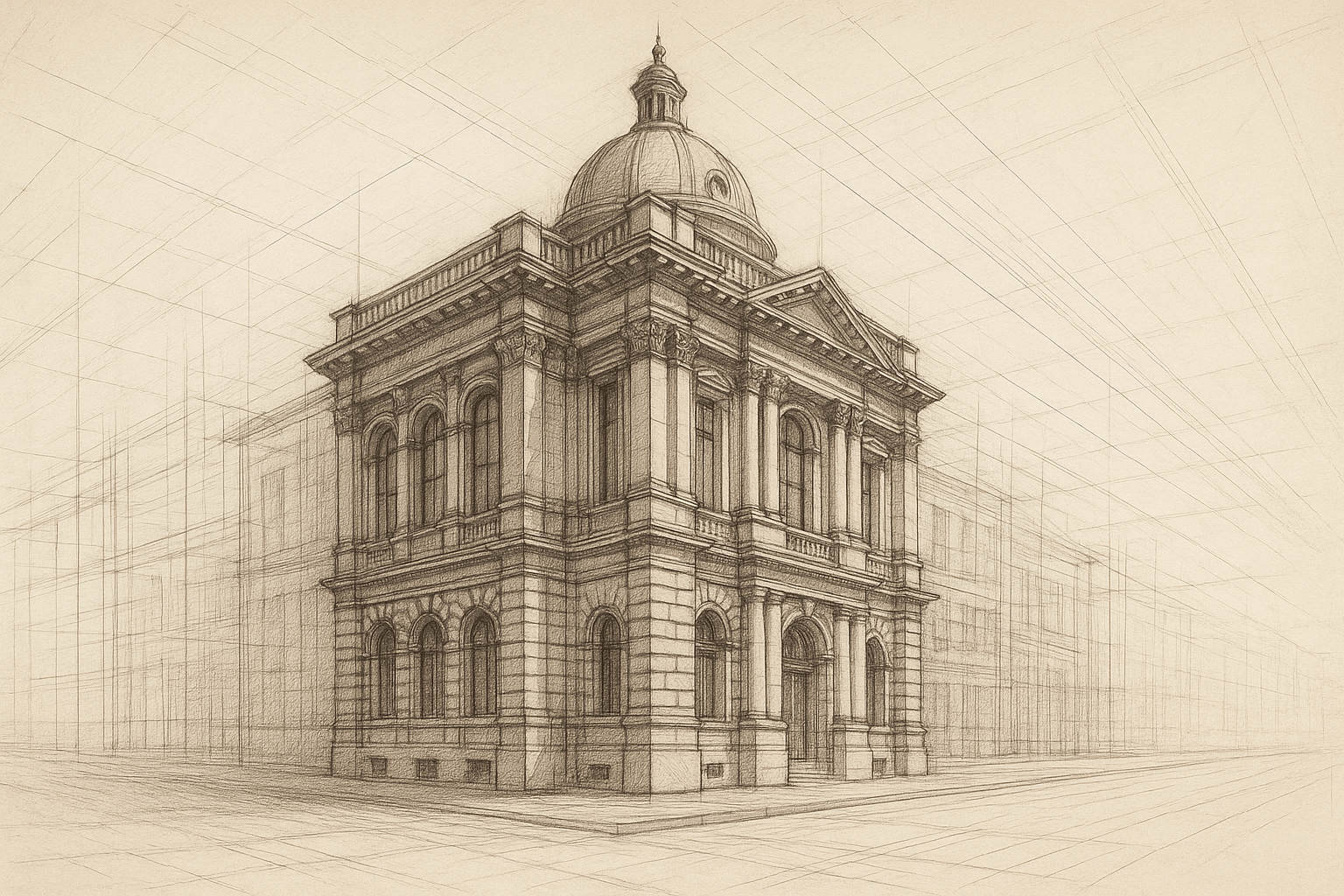
Architectural Drawing
The art style of architectural drawing is characterized by its precision and attention to detail. Lines are clean and sharp, and perspective is often used to create a realistic sense of depth. shadows are often used to create a sense of volume, and the overall effect is often quite realistic.
AOI thinking about Architectural Drawing [+_~]-/
Overview and Quickfacts
Architectural drawing is the process of creating a 2D representation of a 3D structure. It is used by architects to communicate their ideas to clients, engineers, and construction workers. There are three types of architectural drawings: 1. Conceptual drawings are used to communicate an architect’s ideas for a project. They are typically hand-drawn and use simple lines and shapes to represent the proposed structure. 2. Technical drawings are more detailed and accurate representations of a proposed structure. They are used to communicate an architect’s ideas to engineers and construction workers. 3. Presentation drawings are used to communicate an architect’s ideas to clients. They are typically computer-generated and use realistic images to represent the proposed structure.
Can understand it also, as:
blueprints, plans, drawings, sketches
Categorize it as:
Impressionism, Modernism
.: Dreaming :.
holds a HAIKU for the art style
:. Thought is power .:
Detailed Description
Architectural drawings are a type of technical drawing that are used to convey information about the construction of a building or other structure. They are typically created by architects, engineers, or other professionals who are involved in the design and construction process. There are many different types of architectural drawings, including floor plans, elevations, sections, and details. Each type of drawing serves a different purpose and provides different information about the project. Floor plans show the layout of a space and the location of walls, doors, and windows. Elevations show the front, back, and sides of a building. Sections show how the different parts of a building fit together. Details provide information about specific elements of the design. Famous artists who have created architectural drawings include Leonardo da Vinci, Michelangelo, and Frank Lloyd Wright.
.. beep, beep, beep ..
<START OF TRANSMISSION>
1. Architectural drawings are two-dimensional representations of three-dimensional buildings or structures. 2. They are often used by architects and engineers to communicate their ideas to clients or contractors. 3. Drawings can be either hand-drawn or computer-generated. 4. Hand-drawn drawings have a more personal touch and can be more expressive than computer-generated drawings. 5. Computer-generated drawings are more precise and can be more easily modified or changed. 6. Architectural drawings can be either plans, elevations, or sections. 7. Plans are two-dimensional representations of the building from above. 8. Elevations are two-dimensional representations of the building from the side. 9. Sections are two-dimensional representations of the building cut through vertically. 10. Architectural drawings often include dimensions and annotations to indicate specific measurements. 11. Scale is an important aspect of architectural drawings, as it allows the drawings to be accurately proportioned. 12. The most common scales used for architectural drawings are 1:20, 1:50, and 1:100. 13. Architectural drawings can be either black and white or color. 14. Color can be used to highlight specific features or to add visual interest. 15. Black and white drawings are typically more formal and are often used for construction documents. 16. Architectural drawings can be either two-dimensional or three-dimensional. 17. Three-dimensional drawings are called perspective drawings. 18. Perspective drawings give the viewer a more realistic sense of the building or structure. 19. Two-dimensional drawings are often used for preliminary designs or for construction documents. 20. Architectural drawings can be either paper or digital.
<EOF>
.. robbel bob
Visual Examples from our image gallery
Coming soon, we are so slow .. might never come
Artists, Paintings, and more
(be aware, can be highly speculative)
Artists (be aware, speculation possible):
1. Albrecht DÃÂürer (1471-1528) 2. Leonardo da Vinci (1452-1519) 3. Michelangelo (1475-1564) 4. Raphael (1483-1520) 5. Rembrandt (1606-1669) 6. J.M.W. Turner (1775-1851) 7. John Constable (1776-1837) 8. Gustave Courbet (1819-1877) 9. Claude Monet (1840-1926) 10. Camille Pissarro (1830-1903) 11. Paul CÃÂézanne (1839-1906) 12. Georges Seurat (1859-1891) 13. Vincent van Gogh (1853-1890) 14. Henri de Toulouse-Lautrec (1864-1901) 15. Paul Gauguin (1848-1903) 16. Henri Matisse (1869-1954) 17. Piet Mondrian (1872-1944) 18. Kasimir Malevich (1878-1935) 19. Georgia O’Keeffe (1887-1986) 20. Edward Hopper (1882-1967) 21. Jackson Pollock (1912-1956) 22. Mark Rothko (1903-1970) 23. Barnett Newman (1905-1970) 24. Clyfford Still (1904-1980) 25. Adolph Gottlieb (1903-1974) 26. Richard Diebenkorn (1922-1993) 27. David Hockney (1937-) 28. John Baldessari (1931-) 29. Chuck Close (1940-) 30. Frank Stella (1936-)
Artworks (be aware, speculation possible)
1. Vitruvian Man, Leonardo da Vinci, 1487 2. The School of Athens, Raphael, 1510 3. The Last Supper, Leonardo da Vinci, 1498 4. Mona Lisa, Leonardo da Vinci, 1503 5. The Sistine Chapel Ceiling, Michelangelo, 1512 6. The Birth of Venus, Sandro Botticelli, 1486 7. The Battle of Alexander at Issus, Albrecht Altdorfer, 1529 8. The Hay Wagon, Pieter Bruegel the Elder, 1565 9. The Tower of Babel, Pieter Bruegel the Elder, 1563 10. Landscape with the Fall of Icarus, Pieter Bruegel the Elder, 1558 11. The Triumph of Caesar, Andrea Mantegna, 1484-1492 12. The Parthenon, Iktinos and Kallikrates, 447-438 BC 13. The Colosseum, Vespasian and Titus, 70-80 AD 14. The Great Pyramid of Giza, Unknown, 2560 BC 15. The Hanging Gardens of Babylon, Unknown, 6th century BC 16. The Temple of Artemis at Ephesus, Unknown, 550 BC 17. The Mausoleum at Halicarnassus, Unknown, 353 BC 18. The Lighthouse of Alexandria, Unknown, 280 BC 19. The Statue of Zeus at Olympia, Phidias, 435 BC 20. The Temple of Apollo at Delphi, Ictinus, 4th century BC 21. The Parthenon Frieze, Phidias, 447-438 BC 22. The Pergamon Altar, Unknown, 2nd century BC 23. The Ara Pacis, Unknown, 13-9 BC 24. The Portico de la Gloria, Mateo, 1256 25. The Cathedral of Notre Dame, Jean de Chelles and Pierre de Montreuil, 1220-1260 26. The Sainte-Chapelle, Pierre de Montreuil, 1240-1248 27. Westminster Abbey, Unknown, 1065 28. Durham Cathedral, Unknown, 1093 29. Saint Mark’s Basilica, Unknown, 1063 30. Hagia Sophia, Isidorus of Miletus and Anthemius of Tralles, 532-537
Epoch
The art style of Architectural Drawing emerged in the early Renaissance period in Italy.
AI ART RESSOURCES (AKA, well Tools)
Helping tools -> predefined search links on other pages:











